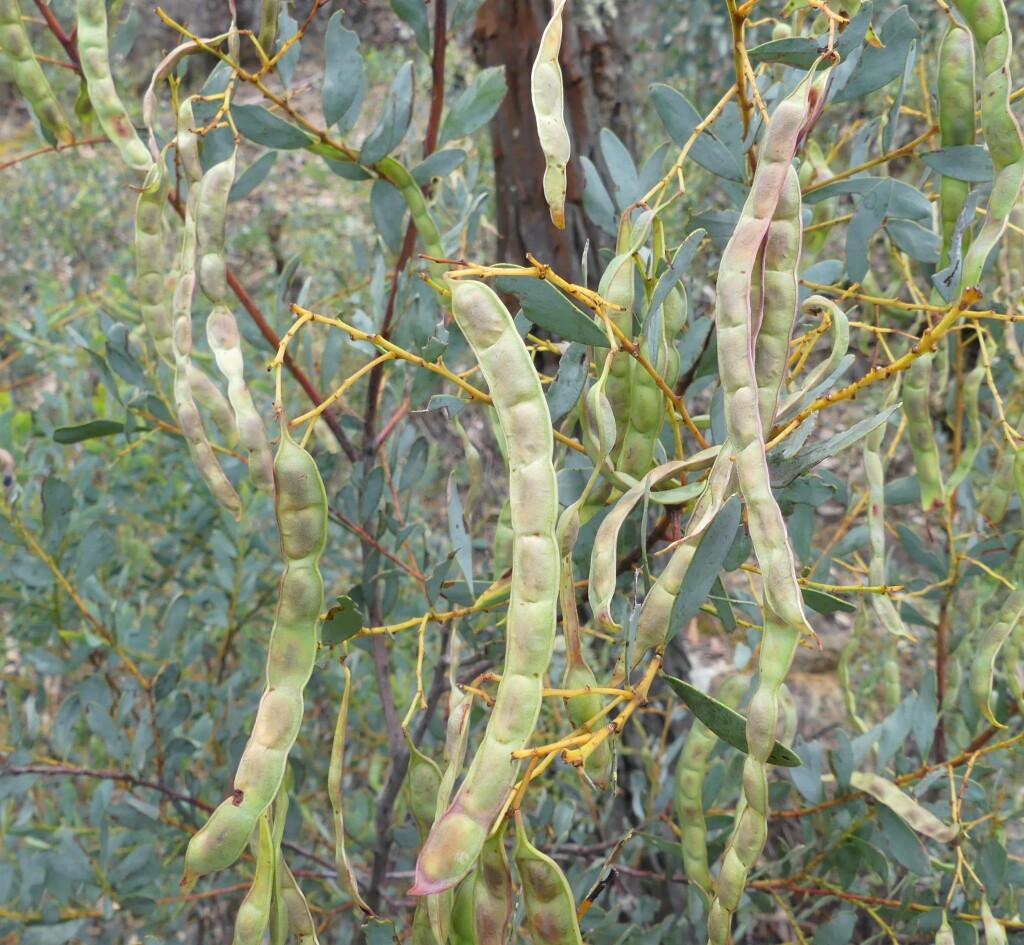Acacia buxifolia subsp. buxifolia
Box-leaf WattleShrub to 2(-4)m high; branchlets glabrous. Phyllodes oblanceolate to narrowly elliptic or narrowly oblong-elliptic, adaxial margin often more or less straight, 1-3 cm long, usually 2-6 mm wide, thin to coriaceous, green to somewhat glaucous, glabrous or sparsely ciliate near base, usually acute to subacute, mucro mostly more or less central; midrib not prominent, lateral veins obscure or absent; gland often absent, 3-10 mm above pulvinus. Racemes with rachis usually 1-3 cm long, glabrous; peduncles 2-5 mm long, glabrous; heads globular, 7-12-flowered, golden. Flowers 5-merous; sepals united. Pods narrowly oblong, to 7 cm long, 5-6 mm wide, firmly chartaceous, straight or curved, glabrous, sometimes pruinose; seeds longitudinal, oblong to ovate, 4-4.5 mm long, slightly shiny, black, aril more or less clavate. Flowers Sep.–Dec.
VRiv, CVU, NIS, EGU, HSF, HNF, MonT, VAlp. Occurring in north-eastern Victoria from Warby Range eastward, rarely above 1000 m and growing commonly on rocky ridges in open scrub or dryish forest or woodland. A single specimen apparently collected from the Wimmera region in 1905 is likely to mislabelled.
Sometimes resembles Acacia pravissima hybrids in phyllode shape and size but these have more angled branchlets and a prominent gland. See also notes under A. decora.
Some plants (e.g. from Beechworth Gorge) have unusually broad phyllodes, up to 1 cm wide.
Plants previously regarded to be dwarf variant of this species from the upper catchment of Little River near Wulgulmerang are now regarded to be a distinct species, A. tabula.
Entwisle, T.J.; Maslin, B.R.; Cowan, R.S.; Court, A.B. (1996). Mimosaceae. In: Walsh, N.G.; Entwisle, T.J., Flora of Victoria Vol. 3, Dicotyledons Winteraceae to Myrtaceae, pp. 585–658. Inkata Press, Melbourne.
 Spinning
Spinning

